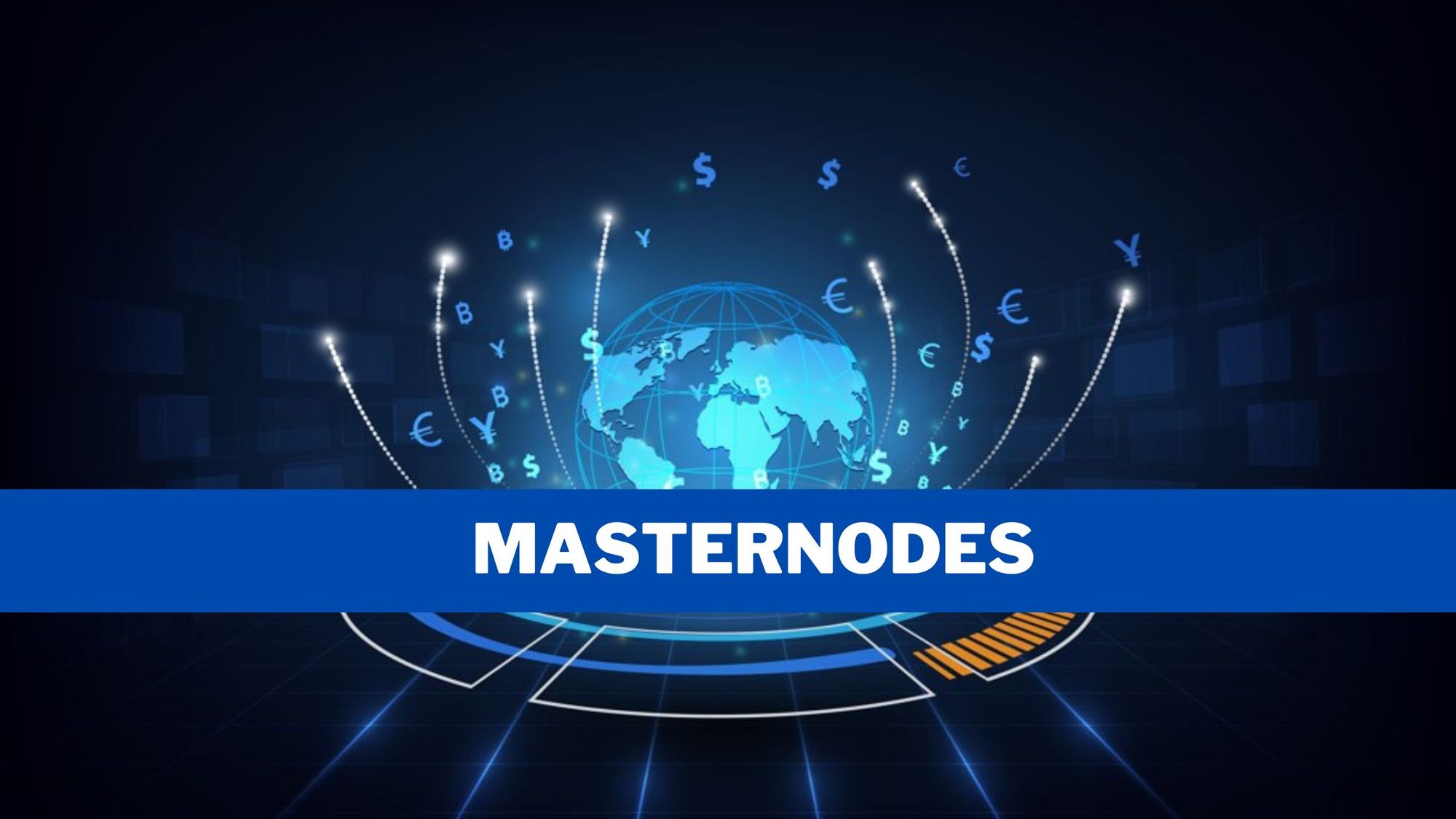DEFINITION:
Masternodes are specialized nodes in a blockchain network that perform functions beyond simply relaying transactions, as is the case with regular nodes.
Masternodes are specialized nodes in a blockchain network that perform functions beyond simply relaying transactions, as is the case with regular nodes. They are essentially servers on a decentralized network that are maintained by their operators and perform specific tasks in exchange for cryptocurrency rewards. Masternodes are commonly associated with Proof of Stake (PoS) or hybrid PoW/PoS blockchain networks.
Key Functions of Masternodes:
- Transaction Verification: Masternodes help in verifying and validating transactions on the network, making the process more efficient.
- Instant Transactions: Some networks use masternodes to enable near-instantaneous transactions, bypassing the need for multiple confirmations.
- Private Transactions: In some cases, masternodes facilitate private transactions by mixing coins to obscure their origin.
- Governance and Voting: Masternodes often participate in governance decisions, including voting on proposals for improving the network.
- Data Storage and Retrieval: Some masternodes store data, host decentralized apps, or maintain blockchain-related services.
Requirements for Running a Masternode:
- Collateral: To run a masternode, you usually need to hold a certain number of the network's tokens as collateral. This is to ensure that the node operator has a stake in the network's success.
- Technical Requirements: Running a masternode often requires a dedicated IP address, sufficient storage, and constant uptime to maintain network integrity.
- Software: The specific software for running a masternode varies by blockchain and is usually provided by the network itself.
Benefits:
- Passive Income: Masternode operators receive rewards, usually in the form of cryptocurrency, for performing network services.
- Governance Influence: Operators often have a say in the network's governance, allowing them to influence its direction.
- Network Security: The collateral requirement and specialized functions make the network more secure and efficient.
Risks:
- Cost: The initial setup and ongoing maintenance can be costly.
- Technical Knowledge: Running a masternode usually requires a certain level of technical expertise.
- Regulatory Risks: Depending on the jurisdiction, running a masternode might have legal implications.
- Market Volatility: The value of rewards can fluctuate due to market conditions.
Masternodes play a crucial role in enhancing the functionality, efficiency, and security of blockchain networks. They are particularly popular in networks that aim for quick and private transactions, as well as decentralized governance.

The concept of masternodes gained prominence with the launch of Dash (originally known as Darkcoin) in 2014.
Dash introduced masternodes as a way to add new layers of functionality to its blockchain network, beyond what was possible with Bitcoin's more basic node structure.
Here's a look at the history and evolution of masternodes:
Early Beginnings:
- 2014 - Introduction by Dash: Dash introduced the concept of masternodes to perform specialized tasks like InstantSend and PrivateSend, which enabled instant transactions and increased privacy, respectively.
- 2014 - Collateral Requirement: To run a Dash masternode, operators were required to lock up 1,000 Dash as collateral. This was to ensure that masternode operators had a vested interest in properly maintaining their nodes and acting honestly.
Adoption and Evolution:
- 2015-2016 - Copycats and Variations: After Dash's success, other cryptocurrencies started to implement their own versions of masternodes, each with varying collateral requirements and functionalities.
- 2016 - Governance Functions: Dash further evolved the role of masternodes by allowing them to vote on budget proposals and governance issues, effectively decentralizing the decision-making process.
Mainstream Recognition:
- 2017 - ICOs and Masternodes: During the ICO boom, several new projects incorporated masternodes into their network architecture, often as a selling point to attract investors looking for passive income opportunities.
- 2018 - Masternode Pools: As the collateral requirements for running a masternode were high for individual investors, masternode pools became popular. These pools allowed multiple users to combine their holdings to run a masternode and share the rewards.
Diversification and Specialization:
- 2019 - Multi-tiered Masternodes: Some projects introduced multi-tiered masternodes, where different levels of nodes could exist with varying collateral requirements and reward structures.
- 2020 - DeFi and Masternodes: With the rise of Decentralized Finance (DeFi), some projects began to explore the integration of masternodes with DeFi applications.
Recent Developments:
- 2021 - Regulatory Scrutiny: As regulatory frameworks around cryptocurrencies began to tighten, masternode operators started to face questions about compliance and legal responsibilities.
- 2022 - Continued Innovation: New use-cases for masternodes continue to emerge, including data storage, decentralized VPN services, and more.
Masternodes have come a long way since their inception, evolving from a mechanism for enabling specific transaction types to becoming a multi-functional component of complex blockchain networks. They remain a topic of interest for both technical innovation and as a form of investment.
You May Also be Interested In:



